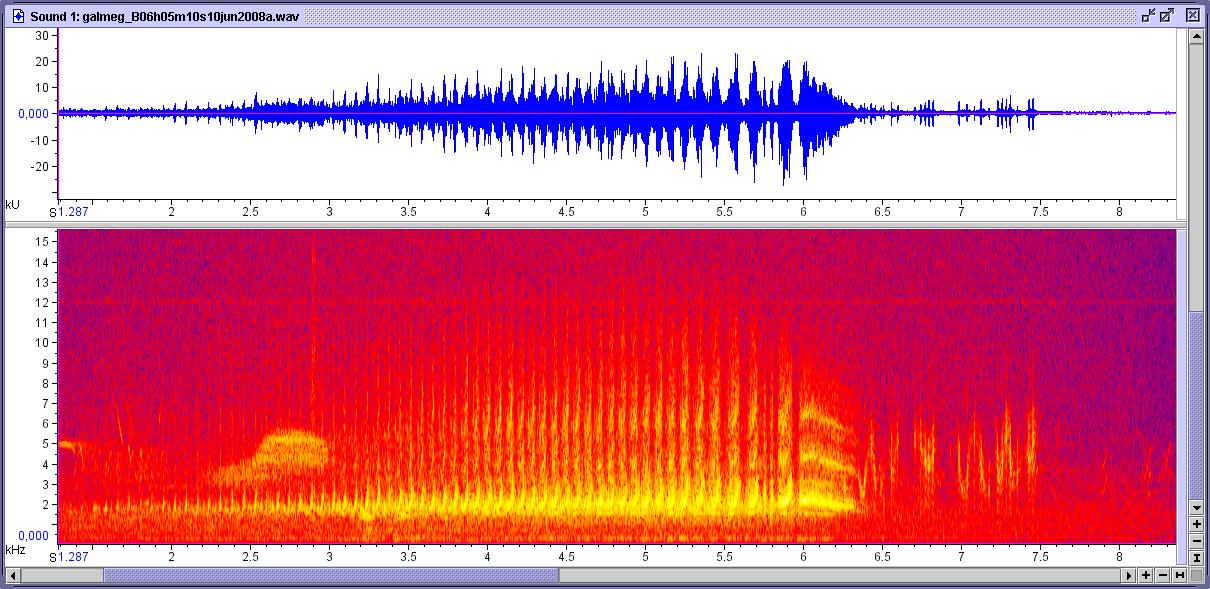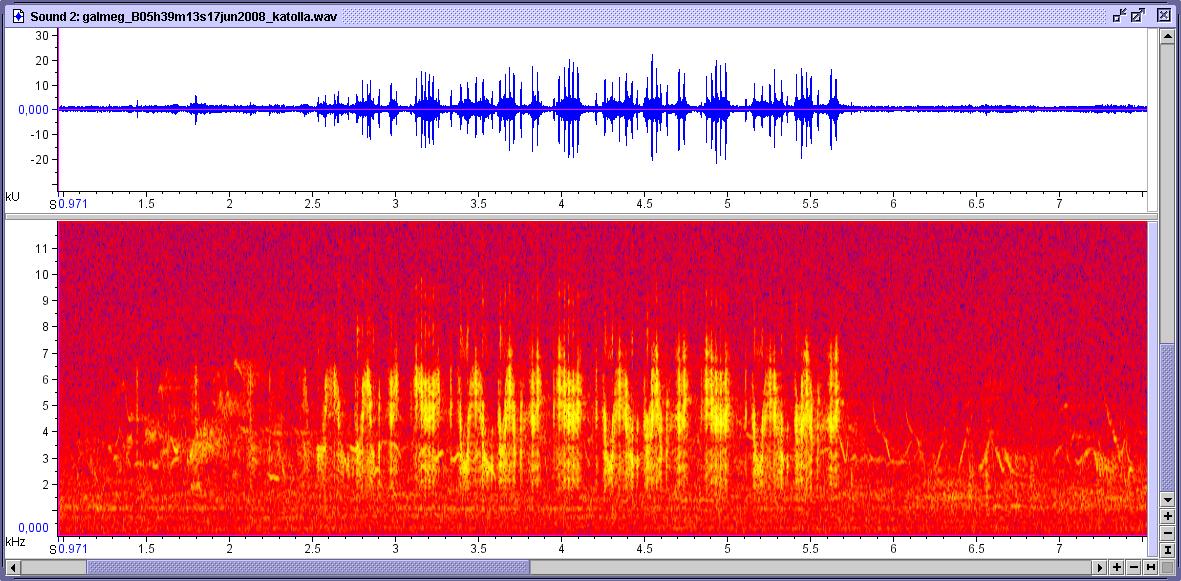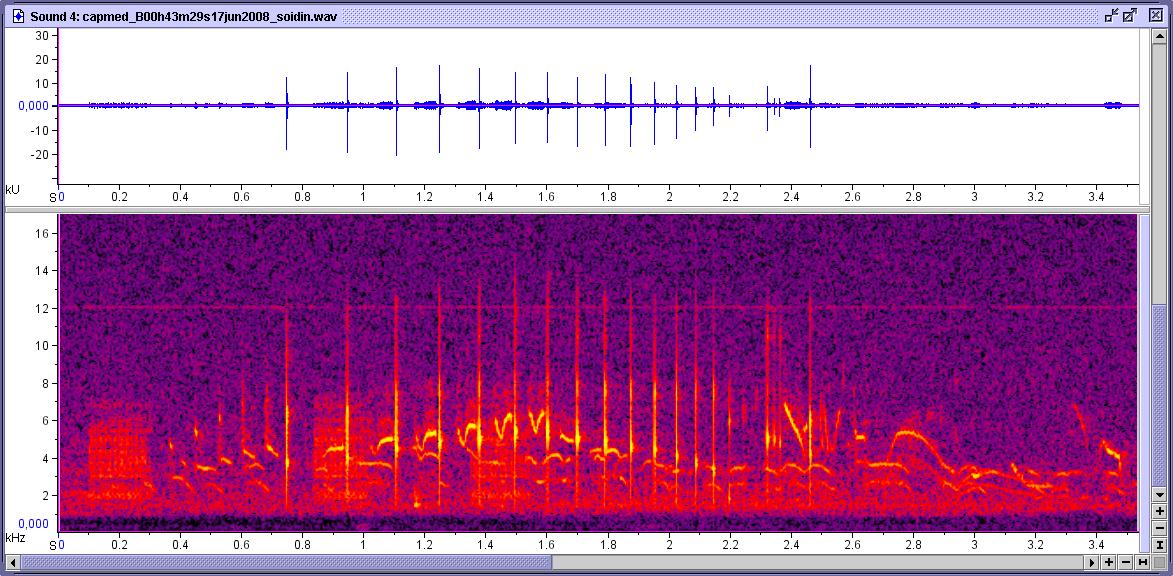The bird was most active 1-2 hours after sunrise.

Photographs the bird.
This bird was found at Tohmajärvi, North Karelia, Eastern Finland in June
2008.
The rumor says that the bird was first noticed in Early June by the
local farmer who
after about two weeks later informed the local birders about a nightjar
that sounded strange.
The news was released soon after this. The bird made
two very different
types of sounds. In the complicated and high towering fast aerial display, it is common
knowledge that the tail feathers of snipes make a loud sound.
This unusual sound readily
identified as such in this bird.
In this sample, there is one weak greenfinch song at about 2.4 to 3 seconds,
and
an instrumental line at 12 KHz.
All the other sounds here come from the snipe. In the blue oscillogram one
can note
how the beating part of the sound becomes louder and lowder.
In the lower sonogram one can count that there are 60 beats (59 intervals)
from
the start at 1.29sec until the next to the last "normal beat" at
5.67 sec. This makes
a beat frequency of 13.5Hz, becoming slightly lower
at the end. The fundamental
frequency of the sound is very close to 2000Hz.
Within each beat the fundamental
frequency increases
to 2200Hz. Note also the grunting sounds at about 3.3 and
3.4 sec and a similar
sound at a pitch of 1560 Hz, which shows as a thin separate
horizontal
line every time the snipe shows a beat in the sonogram.
At about 6.0 seconds of this sample a down slurr begins. It lasts for nearly half
a second. This is then followed by weaker sounds for about a second. These sounds
are quite similar to the ones in the next sample. Occasionally (in less than 1/10)
cases the downslurr and the end beast were missing.
When very active this aerial display sound was heard every 30-60 seconds.
The bird was most active 1-2 hours after sunrise.

The second type of sound was seen to correlate with the bird opening the bill. This
was obviously a non-mechanical sound. The call could be heard up to 400 meters,
at which distance it sounded somewhat like a Fieldfare
(Turdus pilaris), but rythmic.
Although first appearing as as mostly a jumlbe of harsh calls, the rythmic feel was evident.
This can be seen both in the oscillogram (blue) and the sonogram (yellow-red).
In this sample, which was quite typical in length and structure, one can note
a set of
louder sounds at about 3.20, 4.05 and 4.90 seconds. These are also
the loudest parts
in this sample. The four sections from 2.5 to 3, 3.4 to 3.9, 4.2 to 4.7 and 5.2 to 5.7
are also nearly identical with each other. The calls after 5.7 are not from the snipe.
At the start there are four very weak calls at 1.45, 1.75, 2.15 and 2.45 seconds, which
are likely to originate from the snipe.
Note also the similarity of these calls to the sounds at the end of the aerial display sounds.

In this recording a corncrake is heard in the background. Also a 12KHz instrumental line is evident.
The loudest parts of the "song" sounds like a pingpong ball. Note the complicated structure of the "song".

Between the actual display "song", one can hear very weak high pitch twittering and chattering.
I don't know what the function of this sound is, but it seems like the two or three snipes are
having fun and chatting to each other. Note the different scale to the previosu sonogram.

